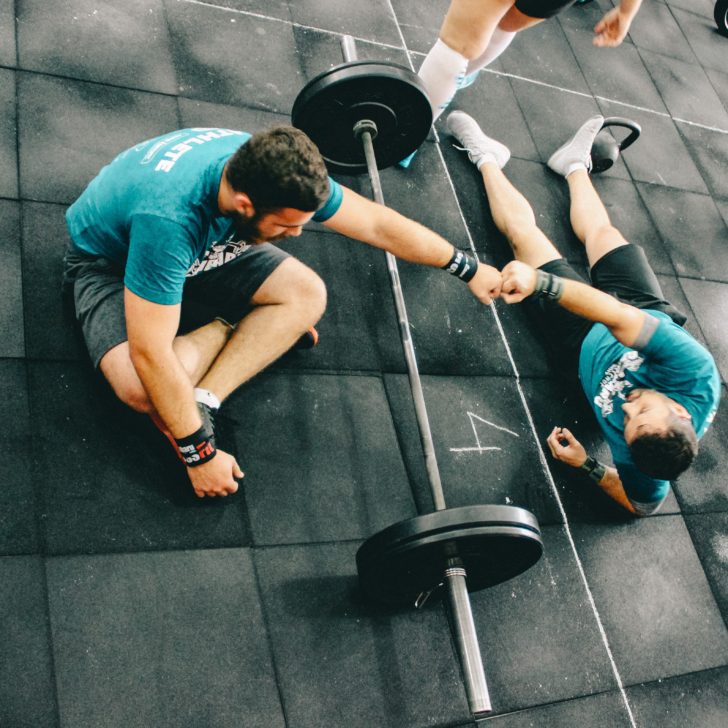“Gym rat.” You may have heard this term before, but do you know what it means? A gym rat is someone who frequents the gym and is devoted to their workouts.
They are typically in great shape and love talking about fitness. If you’re not sure how to talk to a gym rat or what they’re interested in, don’t worry! I’m here to help.
In this post, I’ll explain the most common gym words and phrases so you can chat with your favorite fitness enthusiast like a pro. Let’s get started!
Phrases And Slang of Gym Words
A
AMRAP: AMRAP, or ‘as many reps as possible,’ is a training style where you complete a designated number of reps of an exercise (or circuit) in a set period of time. The goal is to get as much blood flow to the working muscles as possible.
Example: “How many repetitions are we doing?’ … ‘Never mind that, Let’s just AMRAP!”
B
BMI:The BMI is a tool used to determine whether or not you are underweight, normal weight, overweight, or obese. The body mass index (BMI) is a person’s weight in kilograms divided by height squared. For optimum results, use the body mass index in combination with other methods.
Example: Matilda weighs 64 kg and is 1.9 meters tall. What is her BMI?
Divide 64 by 1.92
- BMI = w ÷ h2
- BMI = 64 ÷ 1.92
- BMI = 64 ÷ 3.61
- BMI = 17.7
BMR: Basal metabolic rate (BMR) is the amount of energy needed to keep your body functioning at rest. Things like pumping blood, breathing, and digesting food all require energy—which we get from calories in the form of fuel. In general, people with more muscle mass have a higher BMR because muscles burn more calories than fat tissue.
- Male: (88.4 + 13.4 x weight in kilograms) + (4.8 x height in centimeters) – (5.68 x age)
- Female: (447.6 + 9.25 x weight in kilograms) + (3.10 x height in centimeters) – (4.33 x age)
Bulking: The term “bulking” is used to describe the process of increasing their calorie intake in order to maximize muscle growth. Some fat gain is typically associated with bulking, but many bodybuilders alternate between cutting (the opposite of bulking) and bulking cycles to balance out their progress.
Example: “I’m starting my bulking phase in October, so I’m eating lots of protein and heavy carbs.”
C
Circuit training: Circuit training is a type of bodyweight or weight-based exercise that involves completing a series of exercises in quick succession with minimal rest breaks between each one.
Example: “I love doing circuit training to mix things up and keep my muscles guessing!”
Chalk: Some gyms may have chalkboards, although the usage of this chalk is usually rather different. The white powder you find on bars after they’ve gotten all of your stuff is chalk. To maintain a better grip on the bar, heavy lifters use chalk powder on their hands.
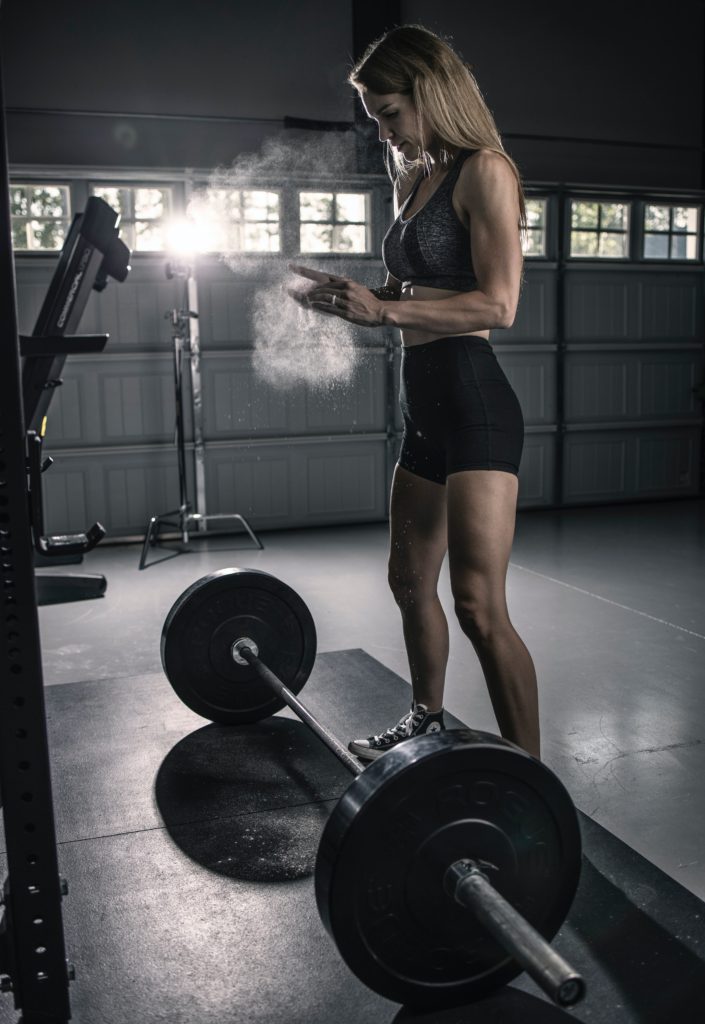
Example: “I have to keep the chalk on my hands, or I’m not going to be able to finish this set.”
Cutting: Cutting lowers a person’s calorie intake in order to lose body fat while preserving muscle mass. Lean meats, yogurts, and whole grains are among the foods included in this diet. After a bulking period, many bodybuilders and fitness enthusiasts use a cutting diet to get a skinnier look.
Example: “I’ve been doing a lot of cutting to get ready for summer, and I’m already seeing great results!”
D
DOMS: DOMS, or delayed-onset muscle soreness, is a pain that some people feel in their muscles after they work out. This pain can last anywhere from a few days to a couple weeks, depending on the person’s level of fitness and the type of activity they engage in.
Example: “I love feeling the burn after a tough workout, even if it does mean I have DOMS for a few days afterward.”
E
EMOM: Every minute on the minute. At the start of each minute, a specific number of reps is done.
Example: “For this workout, we’re going to do EMOM style workouts. You have one minute to complete 12 reps of each exercise.”
F
Form: Exercising with the right technique. You’ll want to keep your form in check and do each exercise correctly.
Example: “Remember to always check your form when you’re lifting weights. It’s important to maintain proper posture and technique.”
G
Gains: Gains can refer to either an increase in muscle size or the ability to lift more weight. Gains should be acknowledged as a result of hard effort and dedication.
Example:”It’s been so long since i’ve last seen you, you look amazing! I can tell you’ve been making gains!”
Gym Rat: A person who spends a lot of time at the gym. This term is often used affectionately, as it represents someone who takes working out seriously and dedicates themselves to achieving their fitness goals.
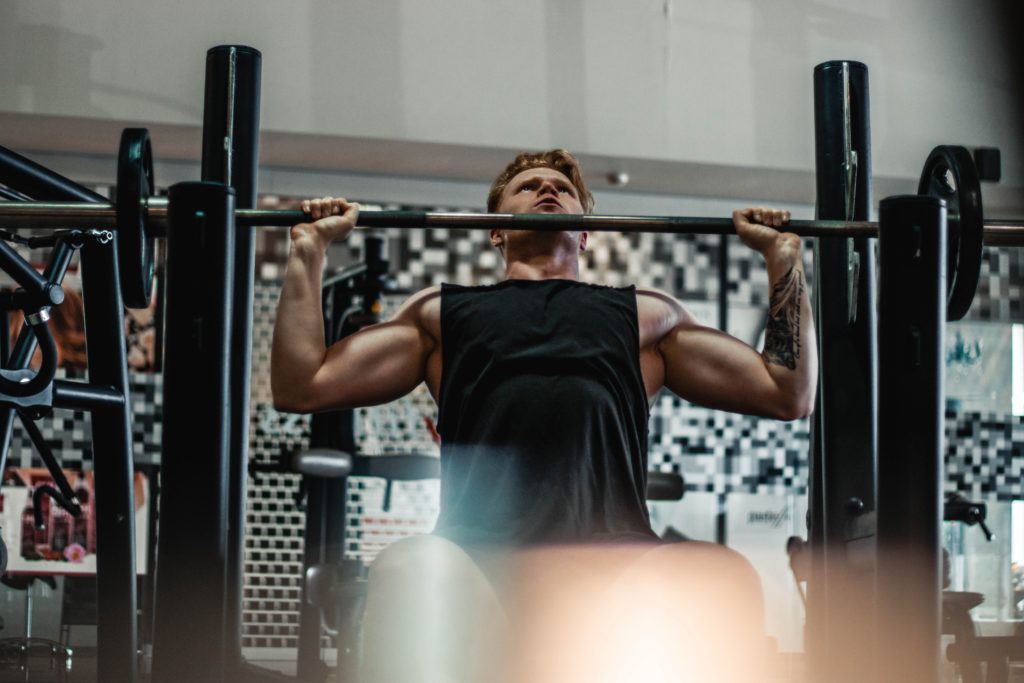
Example:”I see you here all the time! You must be a serious gym rat!”
H
HIIT: High-intensity interval training (HIIT) are short bursts of exercises that improve your athletic ability and keep your metabolism moving.
Example: If you’re using a stationary bike for your HIIT workout, it might go like this: 30 seconds at top speed with maximum resistance, followed by several minutes at low intensity with little resistance.
L
Load: To load more plates on the bar.
Example: “My goal for this workout is to hit a new personal record for my deadlift. I need to load up some more plates.”
M
Macros: Macronutrients (macros) are nutrients that consist of protein, carbohydrates and fats.
Example: “Did you hit your macros today? I know for a fact I didn’t.”
Max: The most amount of weight one can lift for at least 1 rep of a particular exercise
Example: ” My max bench press is 225.”
N
Newbie: A “gym newbie” is someone who is new or unfamiliar to the gym – usually someone who has no idea what they are doing. The term can also be used to describe someone who doesn’t understand what ripped means.However, there is one silver lining to being a newbie: “newbie gains.” This is when beginning weightlifters experience the most drastic gains.
Example: “There’s too many newbies at this gym. I’m thinking about going somewhere else.”
R
ROM: Range of motion. Lifters frequently load up heavier weights than they can manage, which is a mistake. They restrict themselves from fully contracting the muscle by simply moving the weight minor distances. When you lift you want to extend the exercise to its full range of motion.
Example: “Please stay within your ROM. You’re not going to see any gains if you don’t.”
P
PB: No, Not PB&J (PB) is an acronym for “Personal Best.” This is similar to a persons max, but it can also refer to personal best repetitions.
Example: “I just hit my PB today! I’m so proud of myself!”
Plateau: When it comes to working out, progress is key. A plateau occurs when an individual lifts the same weight for an extended period of time without seeing any results.
If you’ve been stuck at the same bench press for a couple months now, chances are you’ve hit a plateau.
Example: “I’m so frustrated with my weightlifting routine. It feels like I’ve been stuck at the same plateau for weeks!”
Pump: A temporary increase in muscle size.

Example: “Look at this sick arm pump I got from those preacher curls!”
R
Reps: Repetitions or (reps) is a term that refers to the amount of times you repeat an exercise within a period.
Example: “I’m aiming for 8 reps in this set.”
Rest: This isn’t like a quick snooze. Every set is followed by a brief rest period.
Example: “I need a few minutes of rest after that last set.”
Ripped: Used to describe someone’s muscular physique. If you ever get called this, congratulations, you’ve won in life.
Example: “That’s the most ripped physique i’ve ever seen!”
S
Sets: A set is a sequence of repetitions. For each set, you’ll do a specific number of reps, and for each exercise you’ll do a certain number of sets.
Example: “Do you know how many more sets you are going to do?”
Spot: Spotting someone during their workout simply means that you are standing behind them to ensure they can finish the set. This is asked when the person is lifting heavy weights and doesn’t feel like they can finish the set. In most situations, the proper gym etiquette dictates that you assist those who ask. It’s more of a demand than a genuine question in most cases.
Example: “Hey do you think you can spot me really quick? I’m pushing for my PB.”
Swole: Someone that is muscular. This is similar to being ripped.
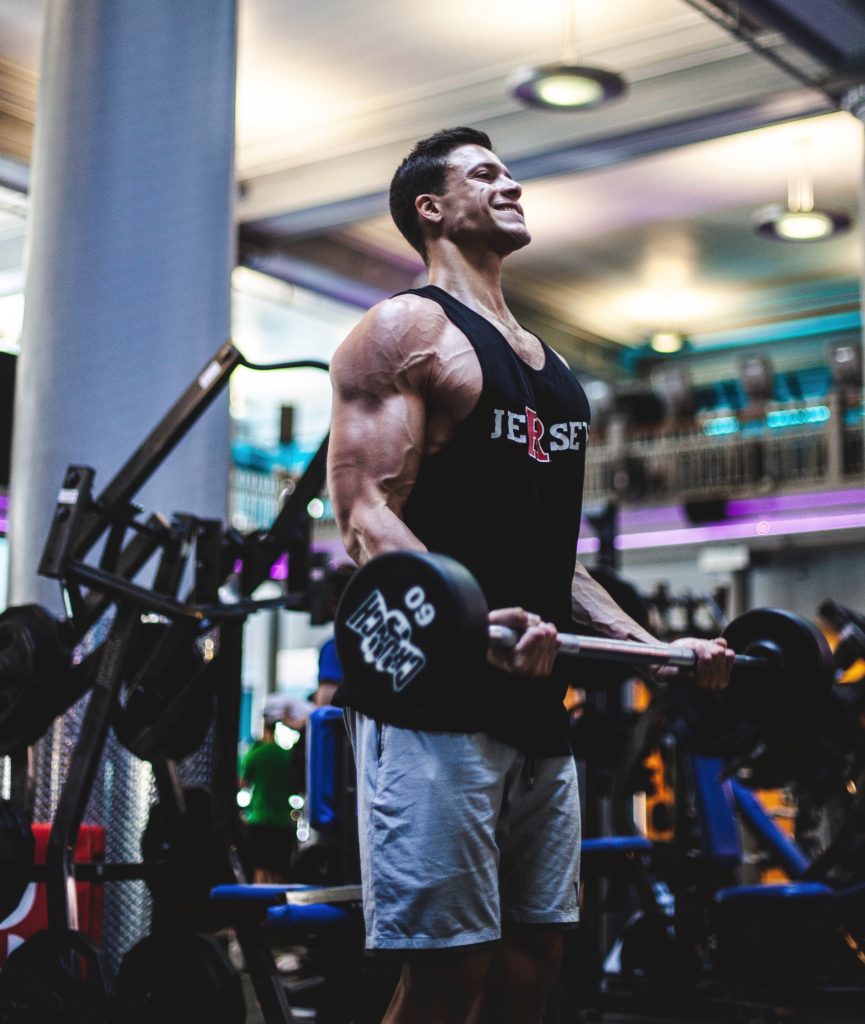
Example: “I see you getting swole! Keep up the good work!”
Techniques
C
Calisthenics:Calisthenics is a type of bodybuilding that uses your own body weight for resistance. Exercises can include pull-ups, crunches, air squats, pushups, dips and more.

Example: “I’ve been doing calisthenics for years now.”
Cardio:Cardio is aerobic exercise (exercise involving large muscle groups that increase the heart rate) that promotes cardiovascular fitness. For many, this is simply a way to burn calories and lose weight, but it’s also a great method to improve endurance and stamina.
Example: “I’m going to hit the elliptical for my cardio today.”
Circuit: A circuit is a series of exercises performed back-to-back with short breaks in between each set. A typical circuit will include a mix of strength and cardiovascular exercise.
Example:”I’m going to do a full body circuit today with cardio intervals.”
Compound Exercises: Compound exercises work multiple muscle groups simultaneously. Common compound movements include the deadlift, bench press and squat.
Example: “I love compound exercises because they are so effective in building muscle mass.”
D
Decline: A decline is an exercise that requires you to lift weights while steadily lowering the angle of your body.
Example: “I’m going to hit the decline bench press today.”
F
Failure: Failure is a term used to describe when someone reaches the maximum amount of reps they can perform before dropping out at the end of a set.
Example: “This is my last set and I’m reaching failure! Give me some help!”
Functional Training: Functional training is a type of exercise that trains your muscles to work together in order to prevent injury and improve athletic performance. It often involves using specialized equipment like balance boards, resistance bands, stability balls and more.
Example: “I love my functional training classes, I feel like an athlete after every session!”
G
Group Fitness: Group fitness is a type of exercise class that involves multiple people working out together in a group setting. Activities can include spinning, Zumba, Pilates, yoga and more.
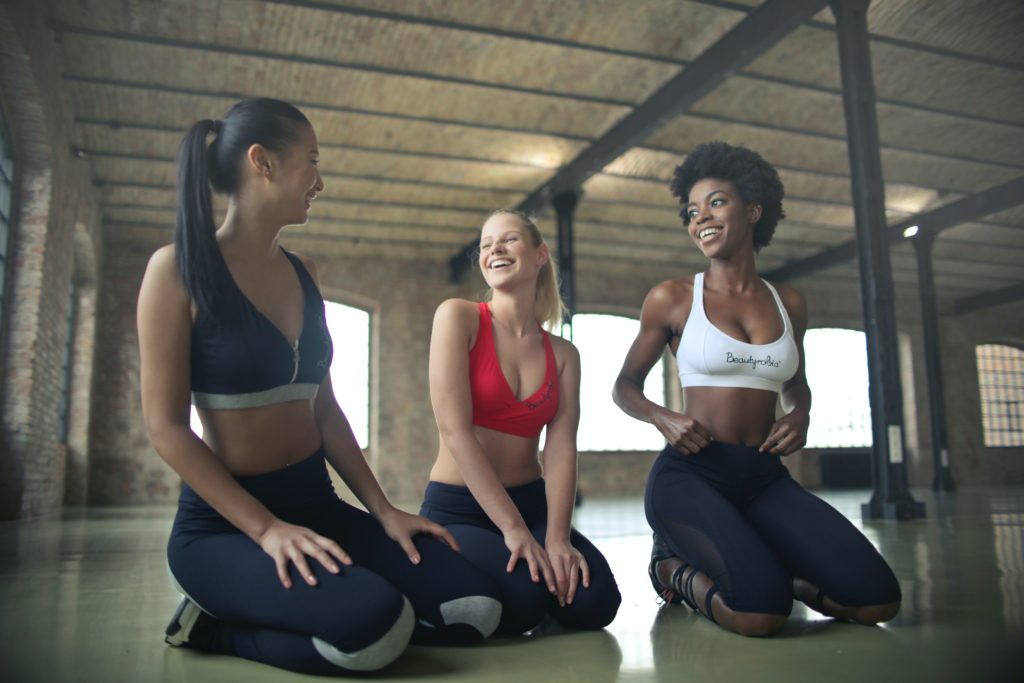
Example: “I’ve been attending group fitness classes every week, they are so much fun!”
Group Training: Group training is a form of coaching in which an instructor leads multiple people through an exercise routine. This style can be particularly beneficial for those who enjoy the support and motivation that comes from working out with others. Examples of common group training classes include CrossFit, boot camp, metabolic conditioning and more.
Example: “I’ve been attending a group training class for the past few months and I can really see improvements in my fitness.”
I
Incline: An incline is an exercise that requires you to lift weights while raising the angle of your body.
Example: “I’m going to hit the incline bench press today.”
Intervals: Intervals are a type of workout that alternates high-intensity exercise with lower-intensity recovery periods. Examples include sprinting for 30 seconds, followed by walking for 60 seconds. This is not to be confused with circuit training, however, which combines multiple exercises throughout a set and does not always involve rest periods
Example: “I love to do weight training interspersed with intervals of cardio.”
Isolation: An isolation exercise is a movement that targets only one muscle group at a time.
Example: “I need to do some isolation exercises for my biceps.”
L
Lifting Weights: Lifting weights, also known as resistance training or strength training, is a popular form of exercise that uses dumbbells, barbells and/or machines in order to build muscle mass by repeatedly using the force of gravity.
Example: “I like lifting weights at the gym because it helps me build muscle and feel stronger.”
N
Negatives: Negatives are a form of strength training in which you focus on slowly lowering the weight instead of lifting it.
Example: “I find that doing negatives helps me build more muscle than regular lifting alone.”
P
Plank: A plank is a core exercise in which you hold your body weight up using only your arms and legs.
Example: “I like to do planks at the end of my workout because they really work my core.”
Powerlifting: Powerlifting is a form of strength training that focuses on developing the muscles used for heavy lifting. Powerlifters typically perform squats, deadlifts and bench presses in order to increase their overall strength.
Example: “My friend is into powerlifting, and she says that it’s one of the most rewarding forms of exercise.”
S
Super Set: A super set is a type of workout that involves performing two or more exercises back to back, with no rest in between.
Example: “Let’s make our last set a super set.”
T
Tabata: Tabata is a high-intensity interval training workout that involves performing 20 seconds of extremely intense exercise, followed by 10 seconds of rest, for a total of 4 minutes.
Example: “I heard about this new Tabata workout that’s supposed to be really effective.”
W
Warm Up: A warm up is a short period of exercise that helps prepare your muscles and mind for more intense activity. It typically involves light cardio, stretching, and other low-impact movements.
Example: “Before every workout, I always make sure to do a good, solid warm up.”
Weightlifting: Weightlifting, also known as Olympic weightlifting or strength training, is a popular form of exercise that uses dumbbells, barbells and/or machines in order to build muscle mass by repeatedly using the force of gravity.
Example: “I love weightlifting because it helps me stay toned, build muscle, and feel strong.”
Equipment And Products
B
Barbell: A barbell is a long, straight metal rod with weighted plates on either end. It is used in weightlifting and powerlifting to add resistance to your muscles during strength training exercises.
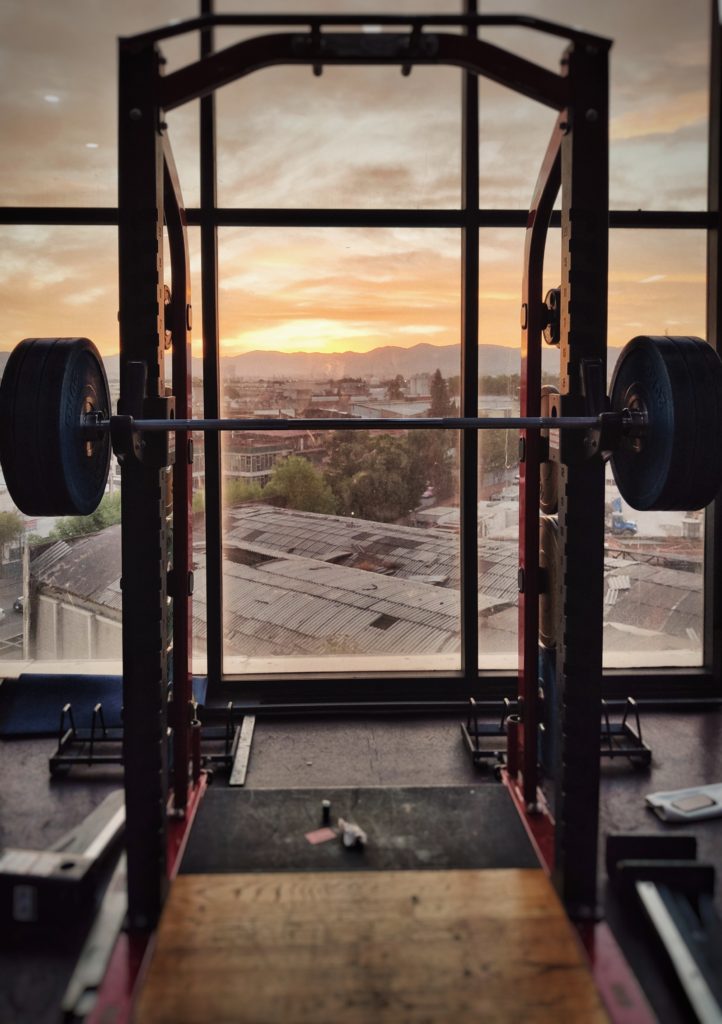
Example: “I recently started doing barbell squats at the gym, and I’ve already noticed a big difference in my strength.”
Bench: A bench is a padded, elevated platform that is used for a variety of exercises, including weightlifting, ab exercises, and push ups.
Example: “I like to use the bench when I’m doing dumbbell presses or weighted crunches.”
C
Cables: Cables are specialized pieces of equipment used in strength training workouts to help you build strength and flexibility.
Example: “I just started using cables at the gym, and I really like how they help improve my range of motion.”
Clamps: Clamps are small metal devices that can be used to adjust the weight plates on a barbell or dumbbell.
Example: “I’m going to need some clamps in order to get this barbell set up properly.”
D
Dumbbell: A dumbbell is a weighted object that you can hold in your hand during strength training exercises.
Example: “I like to use dumbbells for my arm workouts because they help me isolate each muscle group more effectively.”
E
Elliptical: An elliptical is a piece of fitness equipment that simulates the motion of running or walking without putting any strain on your joints. It is often used as an alternative to more high-impact cardio workouts, such as running or cycling.
Example: “I like to use the elliptical for my cardio because it’s low impact and gives me a great cardio workout.”
EZ Bar: An EZ bar is a specialized version of a barbell that is curved at both ends for increased comfort. It is used in weightlifting exercises to help reduce the strain on the wrists and elbows.
Example: “I find using an EZ bar really helps me get through my bicep curls without getting any wrist or elbow pain.”
F
Foam Roller: A foam roller is a cylindrical piece of equipment made out of high-density foam that you can use to massage sore muscles after a workout.
Example: “I always roll out my muscles with a foam roller after hitting the gym, because it helps relieve tension and prevent injury.”
Free Weights: Free weights are any type of weight that is not secured to a machine or piece of equipment. They are used in strength training exercises to build muscle mass and improve overall fitness.
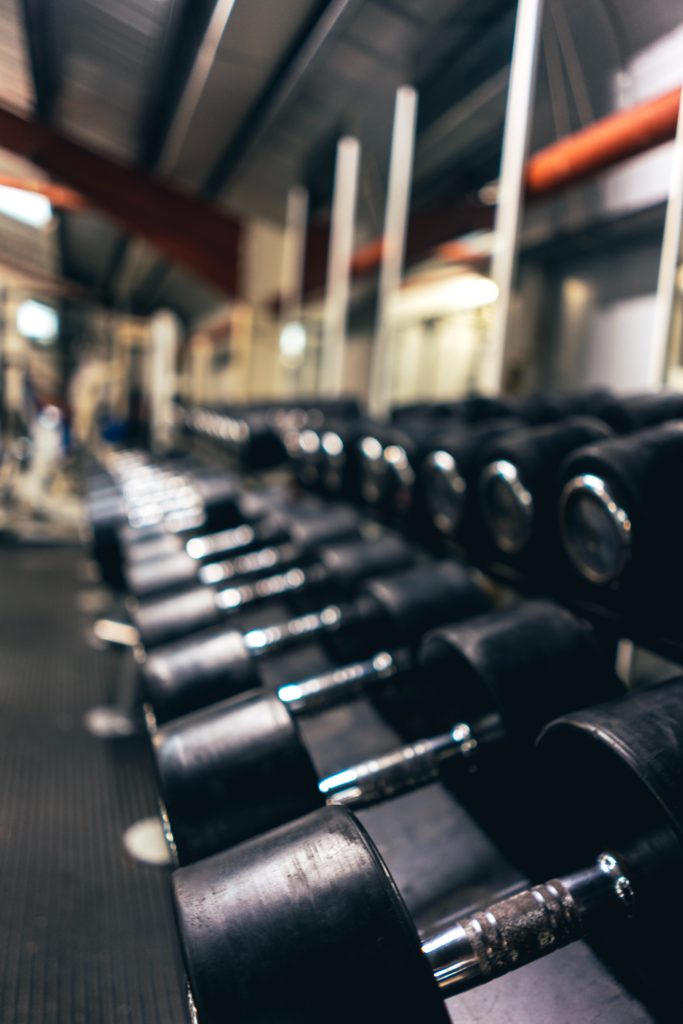
Example: “I prefer to use free weights for my strength training because I have more control over the exercise.”
K
Kettlebell: A kettlebell is a round, weighted object that has a handle attached to the top. It is used in strength training exercises to help build muscle mass and improve cardiovascular health.
Example: “I’ve been incorporating more kettlebell workouts into my routine lately because they are great for toning my entire body.”
M
Medicine Ball: A medicine ball is a heavy, weighted ball that is often used in strength training exercises to build core strength and improve overall fitness.
Example: “I love doing medicine ball slams as part of my workout because they really challenge my whole body.”
P
Plates: Plates are the circular pieces of metal that are used to add or subtract weight from a barbell, dumbbell, or other type of strength training equipment.
Example: “I need to get some new plates for my barbell so I can keep increasing the amount of weight I’m lifting.”
Pre-Workout: A pre-workout is a type of supplement that you take before strength training or other intense exercise to help improve your performance and endurance.
Example: “I always take a pre-workout before hitting the gym because it helps give me energy and focus during my workout.”
